The media discusses energy often. Energy’s definition is often not well understood. A basic knowledge of energy is crucial in today’s world.
Sources of energy are everywhere. It is hard to believe that many parts of the world have problems finding enough energy. Most sources of energy are not easily used by humans. The people of the world will have to develop new ways to get energy cheaply and easily to continue to advance.
Crude oil as a major energy source will be used up in a hundred years or so. Mankind must find alternative forms of energy in order to replace it.
A Simple Definition of Energy

Fundamentally, energy is the ability or capacity to do work. Scientifically, work is done when something, regardless of size, moves. Therefore, energy is needed to cause motion. There are two basic kinds of energy that are divided into additional types.
The first of the two basic kinds of energy is potential energy, which is stored energy. An object has potential energy because of its state or position.
An example of potential energy is a battery which stores electrical potential energy in atoms inside battery. The electrons will move when the positive end of the battery is connected to the negative end and work is done when the electrons move.
A bowling ball rolling down a lane has kinetic energy — energy of motion. When it hits the pins, the energy of the bowling ball is transferred to the pins and they gain kinetic energy that is lost by the ball. The sound of the pins and bowling ball is caused by vibrations of air molecules which are caused to move by the motion of the pins and balls pushing the molecules around.
Potential and Kinetic Energy Can be Divided into Other Energy Forms
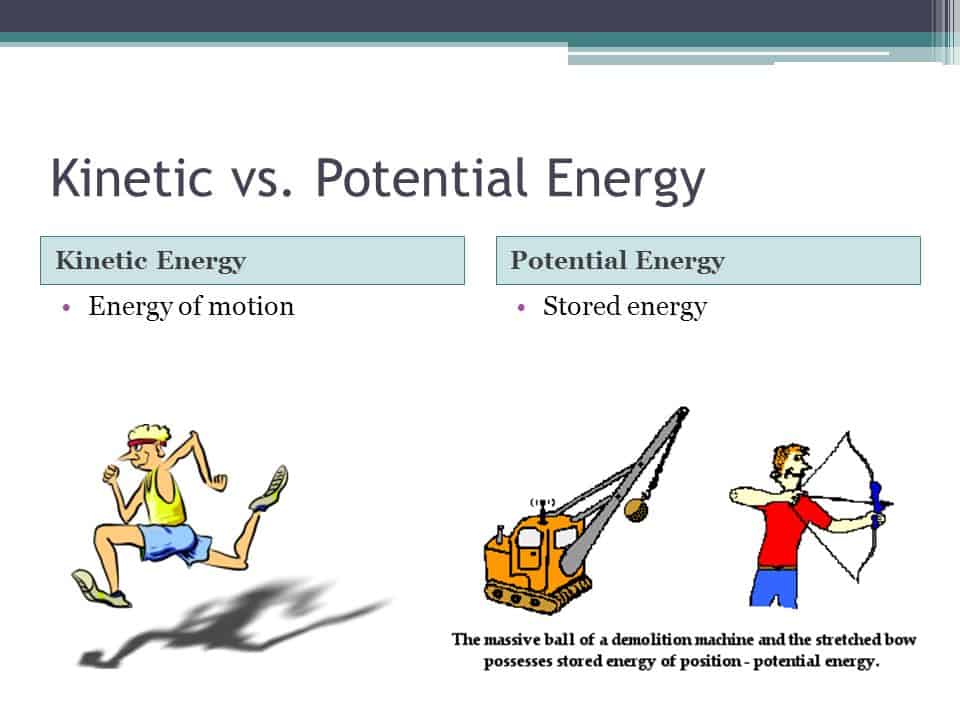
Potential and kinetic energy can easily be changed to other familiar kinds of energy. For example:A match head has chemical potential energy and does no work until it is struck and releases the energy stored in the chemical bonds of the molecules. The heat energy produced is due to rapidly moving molecules which carry enough heat energy to boil water, damage skin, etc.
A meteor speeding toward the earth has gravitational kinetic energy which pulls it with increasing speed into the atmosphere. As it rubs against the air molecules its slows down, but the interaction between the molecules of air and molecules in the meteor causes air molecules and meteor molecules to move as they gain kinetic energy.
This produces enough heat energy to consume the meteor and cause a temporary glow in the air as some heat energy becomes light energy. If the meteor is large enough to survive all the way to the ground, it can impact the denser air molecules and cause sound energy as a sonic boom.
Energy is Never Destroyed but can Change Form
In the above examples one should notice that energy is constantly changed from one form to another. This in the important idea behind The Law of Conservation of Energy and Mass. Energy — or mass — can change forms but can never be destroyed. The total amount of energy in the universe doesn’t change.
The chemical — stored potential energy — in gasoline burns, changing to kinetic energy as the molecules produced by the breaking of chemical bonds speed rapidly around in an engine’s cylinders as heat energy and cause the piston’s in the engine to move as mechanical kinetic energy. The mechanical energy is transferred to the wheels of the car and the car moves.
Energy Moves from Place to Place
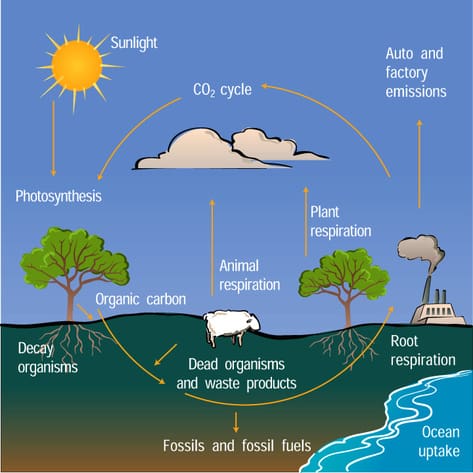
Potential energy can remain in one place for billions of years before it is released, as in the case of chemical potential energy locked in molecules of crude oil. The energy in the oil came from the sun — crude oil was once living plants and plankton — tiny sea life. The energy of the sun got into the plant life by photosynthesis and into animal life when it consumed plant life.
Once the oil is turned into fuel it is dispersed all over the world and much of it is burned, creating heat energy. The heat energy will largely be absorbed by the atmosphere and travel for countless miles transferring its heat energy to countless things— e.g. water vapor.
Energy is important because no work can be done without it. Basically, energy has two forms — potential and kinetic. Potential energy is stored energy. Kinetic energy is energy resulting from motion. Either of the two types can be changed to a number of other subtypes of energy such as chemical, heat, mechanical, sound, etc. Energy cannot be destroyed.
Student Questions:
- Have students discuss energy and give examples of different types of energy and describe how they accomplish work. Answers will vary, but should be similar to examples above.
- Have students name devices or systems in which at least three energy transformations occur. Answers will vary, but should be similar to examples above.
- If energy is never destroyed how are we running out of energy? Answer: Energy constantly changes to forms that are more difficult to use.
- What property of energy makes it important to humans? Answer: it is needed to do work.


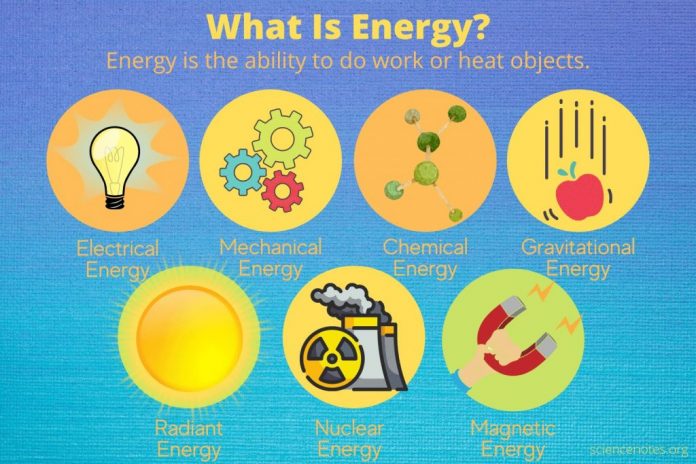


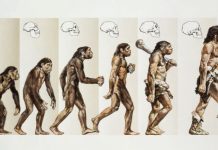


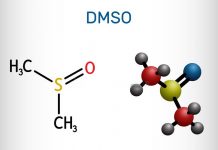










The Energy is good and I have a few for the boys for Energy but is so good